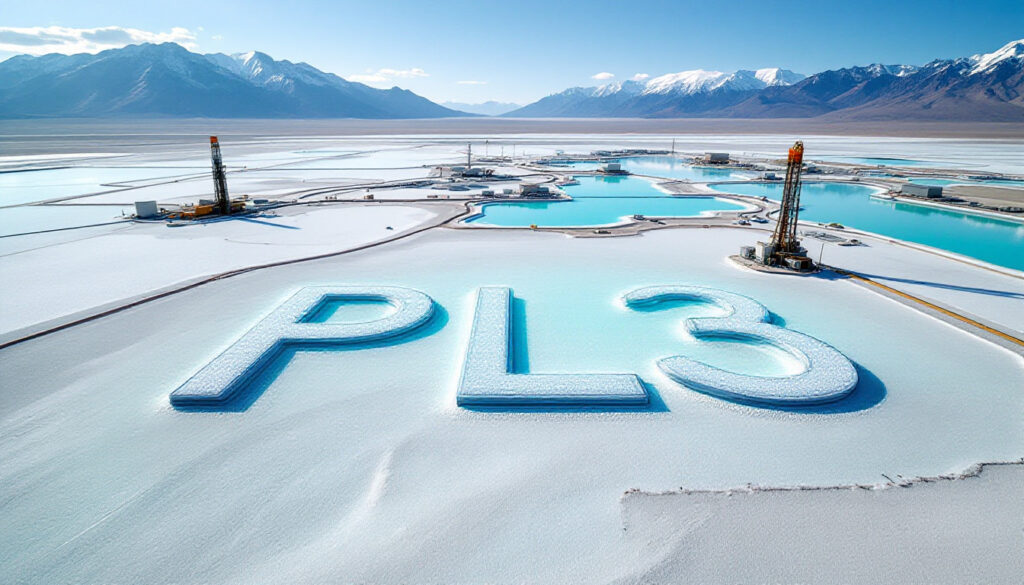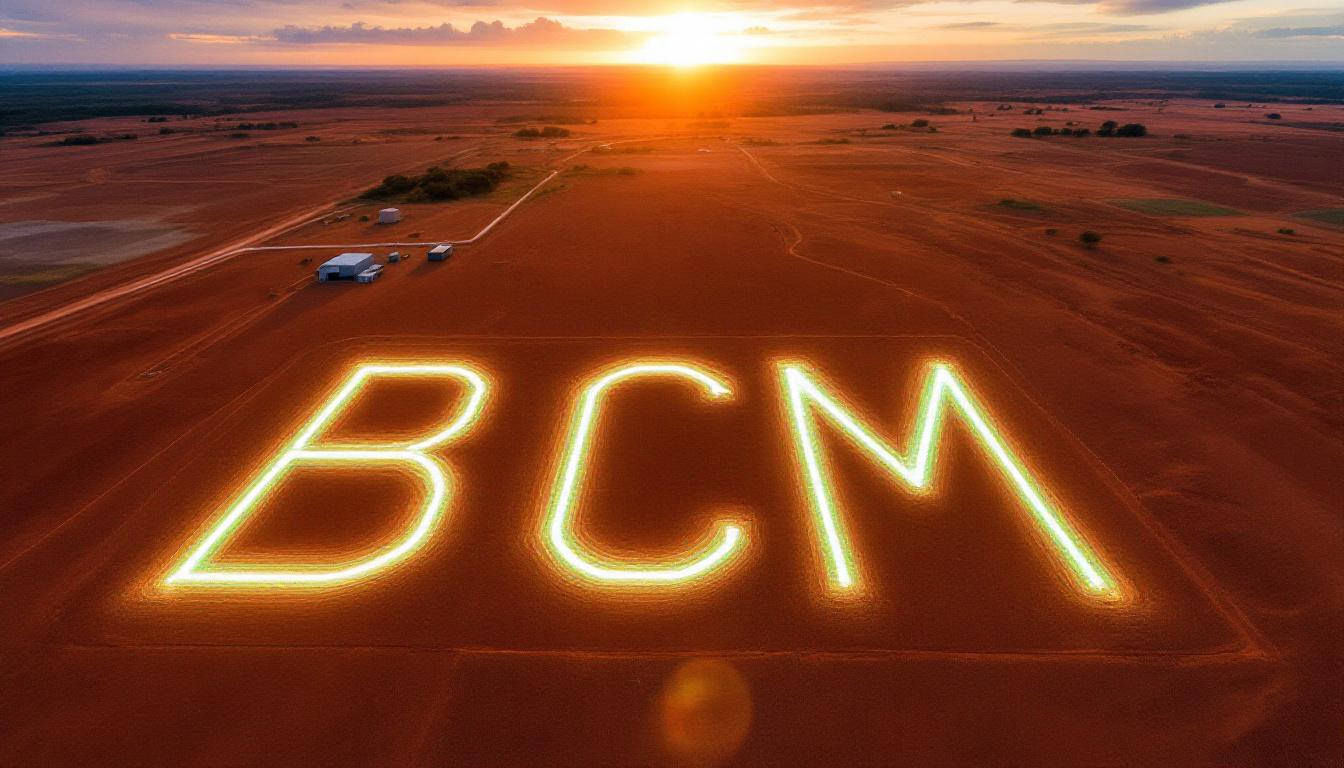Patagonia Lithium Reports Outstanding Porosity Results: Game-Changer for Formentera Project
Patagonia Lithium (ASX:PL3) has announced exceptional nuclear magnetic resonance (NMR) survey results from its JAM24-04 well at the Formentera Lithium Brine Project in Argentina, revealing maximum porosity of 40% and average specific yield of 9% – double the value used in the company's maiden resource estimate.
Record-Breaking Porosity Results Enhance Resource Potential
The latest well results from the northeast section of the Formentera concession demonstrate exceptional potential for Patagonia Lithium's brine project. The nuclear magnetic resonance survey identified four distinct brine zones, with conductivity increasing with depth, indicating potentially higher lithium concentrations deeper in the formation.
Key findings include:
- Maximum porosity of 40% and average specific yield of 9% – more than double the value used in the initial resource estimate
- Excellent vertical continuity in three zones below 87.45m
- High total porosity values measuring 23%, 31%, and 27% in zones 2, 3, and 4 respectively
- Sustained pump rates of 3,500L/hour confirming project viability
"These NMR porosity results are excellent and reflect the high porosity geology in the Paso basin… The Sy (specific yield) value is the drainable value which is excellent at an average of 9% with a maximum of 40%. This data has substantial implications for the Mineral Resource calculation," stated Executive Chairman Phil Thomas.
Understanding Nuclear Magnetic Resonance in Lithium Exploration
Nuclear magnetic resonance at Patagonia Lithium represents a significant technological advancement in lithium exploration. NMR surveys are advanced geophysical tools that measure the hydrogen content in subsurface fluids, providing critical data about porosity and fluid content in rock formations.
For lithium brine projects, NMR data helps determine two critical parameters:
- Total Porosity (TPOR): The total volume of pore space in the rock
- Specific Yield (SY): The amount of fluid that can be extracted/drained from the formation
The higher the specific yield, the more brine (and potentially lithium) can be economically extracted. Patagonia's results showing 9% average specific yield with maximum values of 40% suggest excellent extraction potential, significantly better than originally modelled.
For investors, this means the Formentera project likely contains more recoverable lithium than previously calculated, which could substantially improve project economics and contribute to informed mining investments.
Increasing Lithium Values with Depth
The company also reported promising lithium assay results from Well 4, showing increasing lithium values with depth:
| Sample No | Depth (m) | Lithium (ppm) | Conductivity (μS/cm) |
|---|---|---|---|
| 7 | 251.50-263.50 | 152 | 99,650 |
| 8 | 288.00-300.00 | 152 | 104,350 |
| 9 | 324.79-332.50 | 174 | 117,840 |
| 10 | 354.79-362.50 | 186 | 124,730 |
| 11 | 384.79-392.50 | 200 | 127,890 |
Notably, Well 4 was drilled to test the eastern limit of lithium mineralisation, making these results particularly encouraging for potential resource expansion. The company noted that its proposed Direct Lithium Extraction (DLE) system, Ekosolve™, can extract lithium from brines with concentrations greater than 100ppm – well below the values encountered in this well.
Technical Insights: How Nuclear Magnetic Resonance Works
Understanding nuclear magnetic resonance at Patagonia Lithium requires a brief explanation of the technology. NMR tools use powerful magnets to align hydrogen atoms in the formation fluids. When the magnetic field is removed, these atoms return to their original state, emitting energy that is measured by the tool.
The rate at which the hydrogen atoms realign provides valuable information about the size of pore spaces and how fluids are held within the rock formation. This data helps geologists distinguish between:
- Bound water (water trapped in clay or small pores that cannot be extracted)
- Moveable water (water that can flow but may require pressure to extract)
- Free water (water that will drain naturally under gravity)
The NMR survey at Well 4 was conducted using echo spacing of 800 microseconds and measured parameters including well fluid conductivity, temperature, formation resistivity, and natural radioactivity.
The results showed particularly promising specific yield values in the upper section (44.8m-87.45m) where ignimbrites (volcanic rocks) predominate, reaching 21% specific yield in this zone. Below this, three distinct zones showed good vertical continuity with high total porosity values.
Strategic Position and Future Plans
Patagonia Lithium's Formentera/Cilon project is strategically located in Argentina's lithium triangle, with excellent infrastructure access. The JAM24-04 well is positioned near a highway in the northeast section of the concession, providing logistical advantages for future development.
The company has made impressive progress since listing in March 2023:
- Completed four drill holes with excellent lithium assays and pump tests
- Conducted extensive MT geophysics surveys showing very low resistivities to more than 1km depth
- Recorded lithium values up to 1,100ppm at Formentera
- Planning an MRE (Mineral Resource Estimate) upgrade incorporating new data
- Proposed development of a 1,000-tonne Li₂CO₃ demonstration plant
Furthermore, this project represents a significant step in understanding digital transformation in mining, with advanced technologies like NMR surveys playing a crucial role in optimizing resource estimation.
Technical Importance of These Results
The nuclear magnetic resonance at Patagonia Lithium's Formentera project provides definitive data on the most critical parameters for brine project economics:
- Total porosity – The 40% maximum value is exceptional for a lithium brine project
- Specific yield – The 9% average is substantially higher than modelled in the maiden resource
- Vertical continuity – The consistent values across zones indicate a uniform aquifer system
- Increasing conductivity with depth – This correlation suggests potentially higher lithium values in deeper zones
These parameters collectively determine how much brine can be extracted and ultimately how much lithium can be produced. The high specific yield values are particularly significant as they directly impact extraction economics.
In addition, the development of lithium resources complements other green technology initiatives, such as boosting green hydrogen with platinum, creating a more comprehensive approach to sustainable energy solutions.
Why Investors Should Pay Attention
Patagonia Lithium presents a compelling investment case for several reasons:
-
Resource Growth Potential: The exceptional porosity results suggest the company's resource base could be significantly larger than initially estimated
-
Advancing Technical Understanding: Comprehensive data collection from nuclear magnetic resonance surveys, pump tests, and assays is building a robust technical foundation
-
Favourable Project Economics: High specific yield values (9% average) indicate efficient brine extraction potential
-
Strategic Location: The Formentera project has excellent infrastructure access, crucial for project development
-
Experienced Leadership: Executive Chairman Phillip Thomas brings substantial technical expertise to guide the project development
With lithium demand projected to grow substantially for EV batteries and energy storage, Patagonia Lithium's progress at Formentera positions the company to capitalise on the global transition to clean energy. However, investors should also consider investor strategies in politically-driven markets as geopolitical factors may influence the lithium sector.
As the company progresses toward an updated resource estimate and continues its exploration programme, investors should watch for further developments that could significantly impact Patagonia Lithium's growth trajectory. Additionally, the impact of energy policies on investment strategies may affect the broader resource sector, including lithium projects.
Want to Spot the Next Major Lithium Discovery Before the Market?
Discovery Alert's proprietary Discovery IQ model delivers real-time notifications when significant mineral discoveries are announced on the ASX, helping you identify potentially transformative lithium opportunities like Patagonia's Formentera project. Visit the Discovery Alert discoveries page to understand how early identification of exceptional drill results can lead to substantial investment returns.




